Architecture + Human Behavior: Strategies for Enhancing Wellbeing in Residence Halls
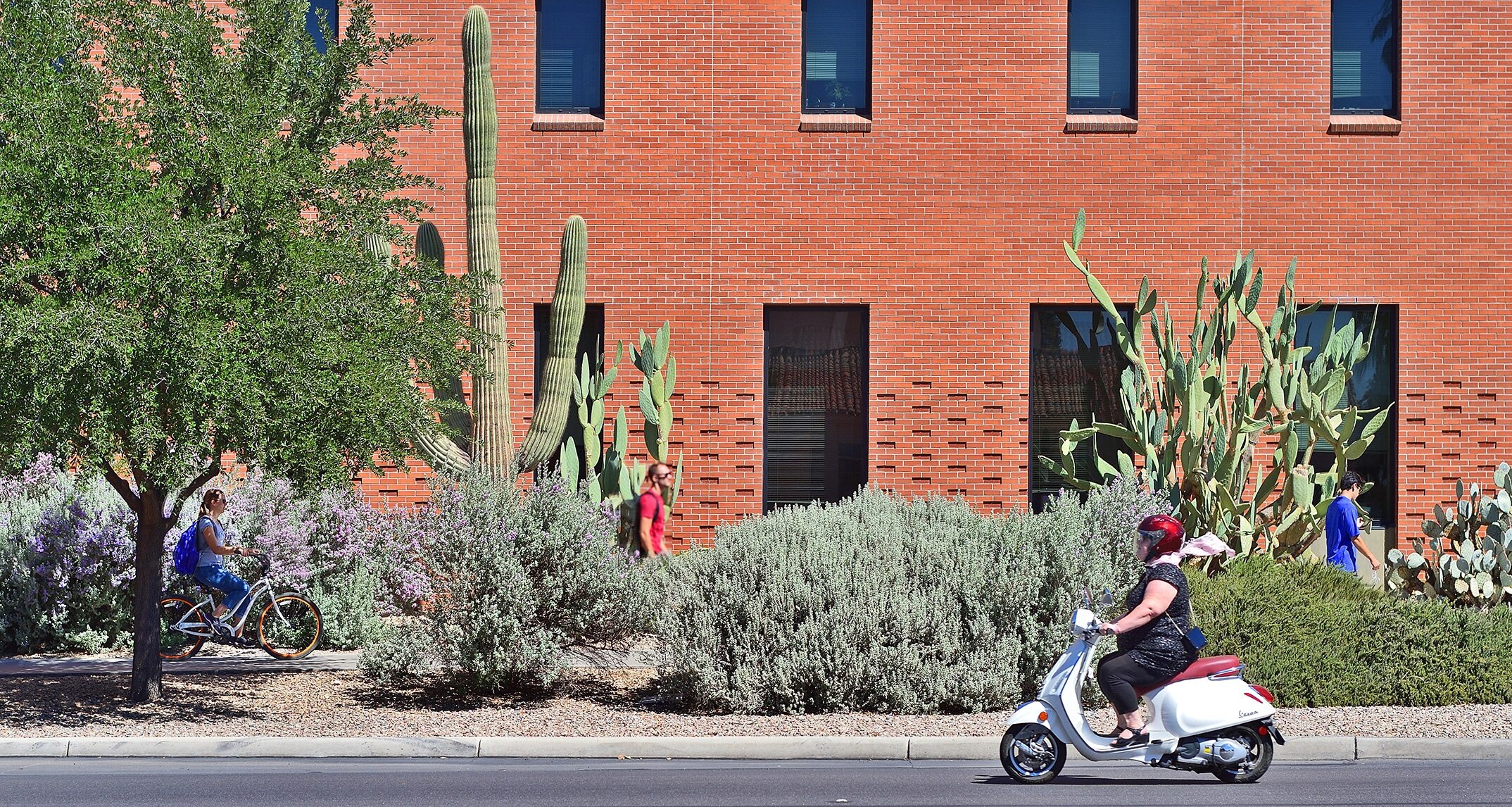
Highland District Housing, University of Arizona — NAC
Before I joined NAC I used to think of the places where we work, study, and live as a stage - a backdrop to our lives unfolding before it. What I quickly learned is that, in reality, architecture is an active player in our lives. There is a reciprocal relationship between a person affecting, and being affected by, external forces in their immediate surroundings. It isn’t an overstatement to say that architecture affects all aspects of our being; how we think, feel, act, and even our health. Don’t believe me? Pick up the book “Welcome to Your World: How the Built Environment Shapes Our Lives” by Sarah Williams Goldhagen which draws upon discoveries in cognitive psychology and neuroscience to explain how the environments we build shape the human experience. Or check out the 2nd edition of “Designing for Learning: Creating Campus Environments for Student Success” by C. Strange and James Banning. I promise, it is good food for thought.
Now as someone who used to work in campus housing, this got me thinking. I started to wonder, “Is the built environment (typified by most college dorms) enriching or impoverishing the educational experience? How might designers work with campus housing officials to manipulate the environment in order to create a place associated with feelings of safety and inclusion, while promoting physical and mental health?” These questions spurred an investigation that ultimately resulted in our being accepted to speak at the 2018 ACUHO-I Conference & Expo in Denver, Colorado. What follows are a few selected highlights from our upcoming presentation.
That Building You’re In Is Nudging You to Make Certain Choices
The environments we build and inhabit shape our lives and the choices we make. Seemingly arbitrary or inconsequential decisions, such as where to locate the kitchen in an office building, have subtle influences on how the people who use the building interact. We know this because companies like Humanyze are using the same sensors, activity trackers, and social networks pushed on us as consumers to reveal the habits and behaviors of building occupants. What we’re learning is that spaces can be designed to subtly cue us towards certain activities, effectively nudging our behavior in a particular direction. The nudge doesn’t guarantee a behavior or outcome, it acts as a sort of reminder (or in some cases, a warning). This kind of design is often defined as “choice architecture.”
So there was a method behind the madness of Apple Park’s behemoth glass ring by Foster+Partners, Google’s obsession with playful meeting rooms, and Facebook’s town-like campus complete with a main street promenade. Drawing upon performance data using a variety of tools, each project was designed to hasten the pace of sharing ideas, making decisions, and creating new products. While colleges don’t have Apple’s reported $5 billion budget to play with, there are lessons to be gleaned from these tech giants. Lessons like intentionality, and capitalizing on available resources to capture interaction and communication trends among students.
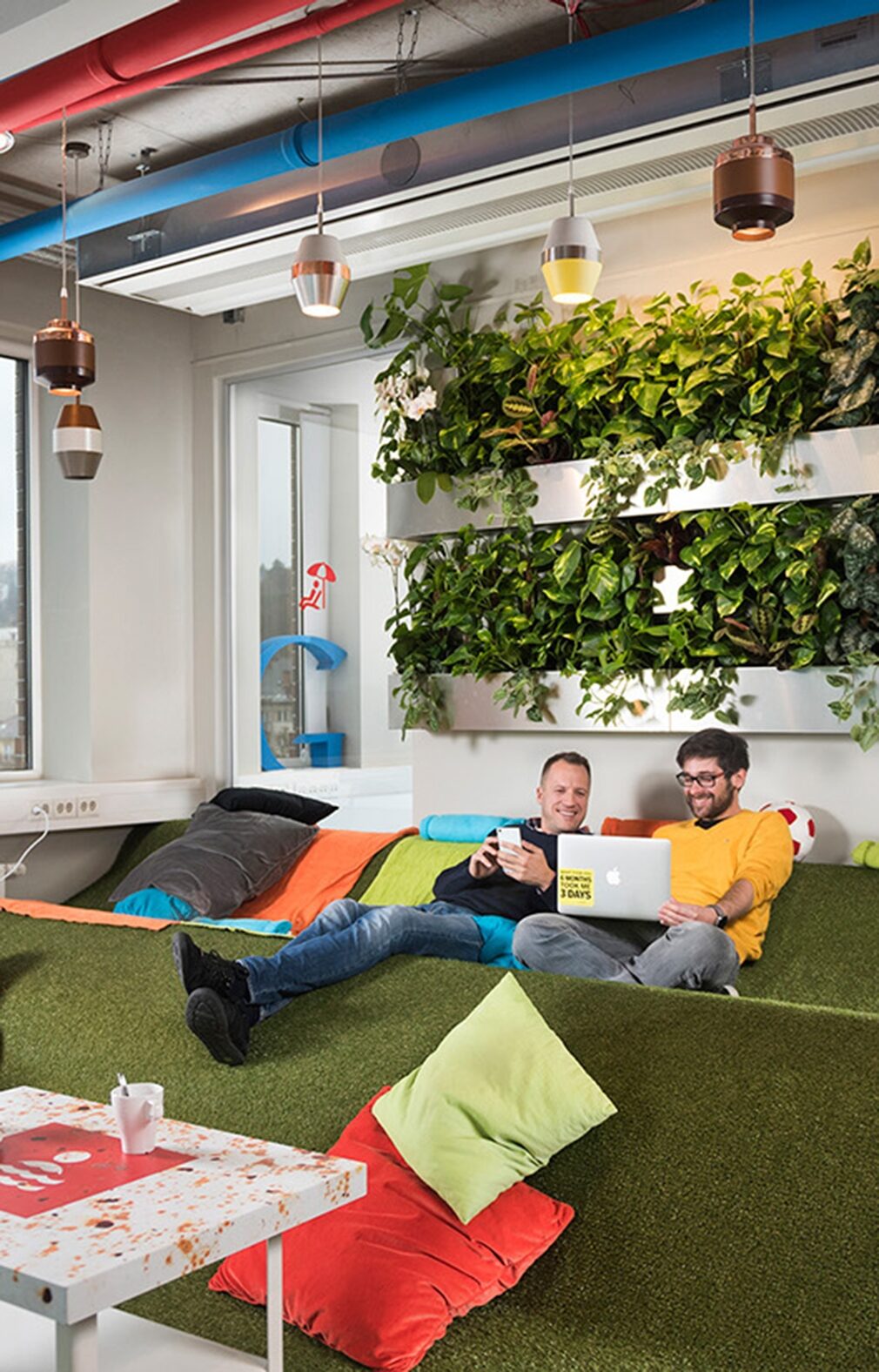
The concept of “choice architecture” uses design to encourage a certain behavior or outcome from the people who inhabit a given space. Top right: Apple Park Visitor Center — Foster+Partners, image courtesy of Foster+Partners; Above: Google — Graphasel Design Studio, Image credit Attila Balazs; Bottom right: Facebook — OMA, Image courtesy of ArchDaily
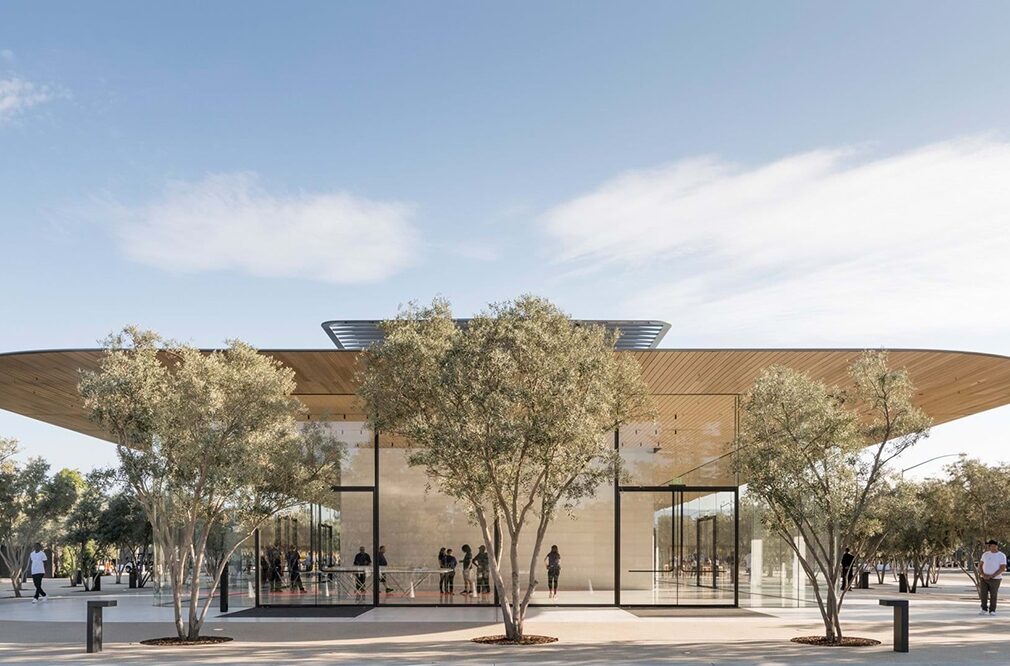
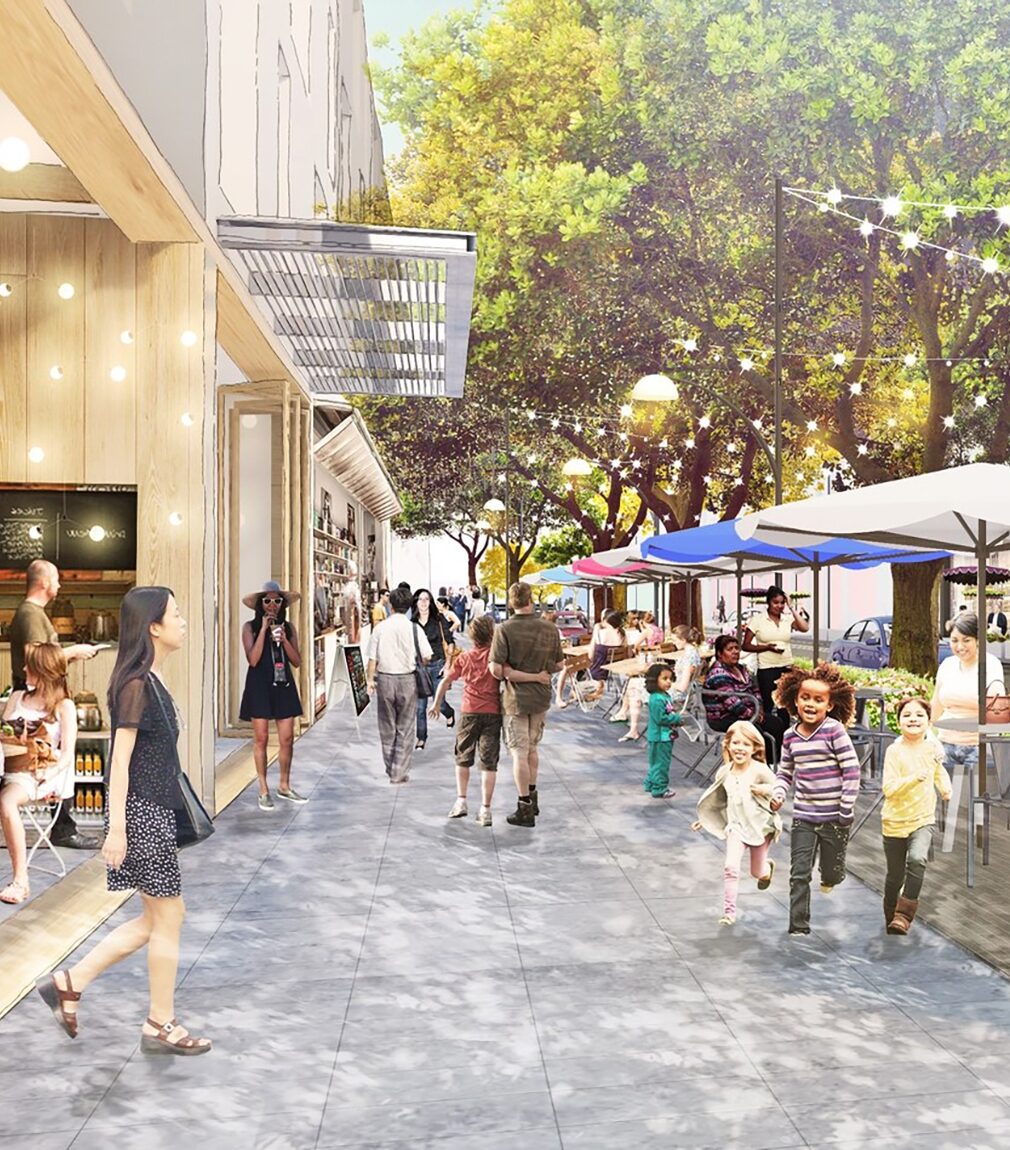
Nudging Students Toward Institutional Goals
The experiences students have in residence halls contribute significantly to so many areas of their academic career. The place of residence affects what they learn, the friends they meet, their identity development, as well as their overall satisfaction with college and their likelihood of persisting to graduation. Thus, it’s no surprise that common student housing project goals we hear from our clients include:
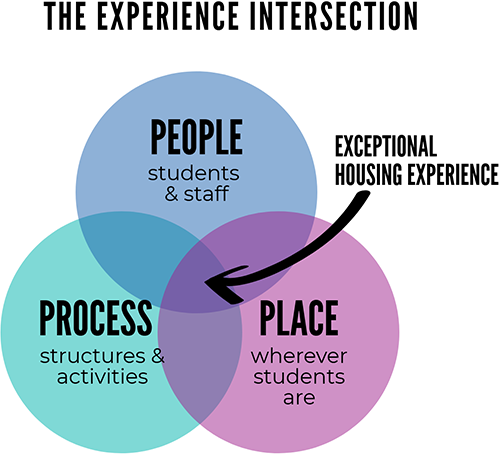
The optimal housing experience lies at the intersection of people, process, and place.
- Positively impact the academic experience
- Improve the sense of community
- Improve safety and security of students
- Better serve students of all abilities
- Encourage desired behaviors (e.g., involvement)
- Improve mental health
More often than not, institutions try to tackle these goals by addressing “people” and “process.” For instance, they might:
- Tweak how RA’s approach hall meetings
- Mandate that residents have to take the same seminar
- Change staffing patterns and policies to influence resident behavior
However, the third, and just as important “P” is “place,” and it is often undervalued in the role it plays or left out of the conversation altogether. By neglecting the powerful role place plays in supporting student housing goals, we actually run the risk of impeding gains in an institution’s “people” and “process” strategies.
Many industries have discovered that spaces can be designed to produce specific performance outcomes such as productivity or increased innovation. In the same way, the physical design features of a residence hall building can create or limit opportunities for student interaction, making behaviors more or less likely.
Examples of Choice Architecture in Campus Housing
Using environmental psychology and choice architecture to help inform the design of campus housing is about maximizing person-environment congruence when support is the goal, or how to seek an appropriate amount of incongruence and challenge when the goal is personal growth. Here are just a few examples of the ways the environment can be engineered as a strategic tool.
Wayfinding & Mobility. People’s comfort and wellbeing often rely on freely moving between spaces. Clearly understood pathways and points of entry and egress are critical to fostering mobility and feelings of security, while the absence of these features often breeds confusion and anxiety.
Most people find that wayfinding difficulties and disorientation are highly stressful, even in benign cases when the occupant is merely confused or delayed. Total disorientation and the sensation of being lost can be a frightening experience and can lead to severe emotional reactions including anxiety and insecurity. Self-esteem and assessments of competence may also be affected.1
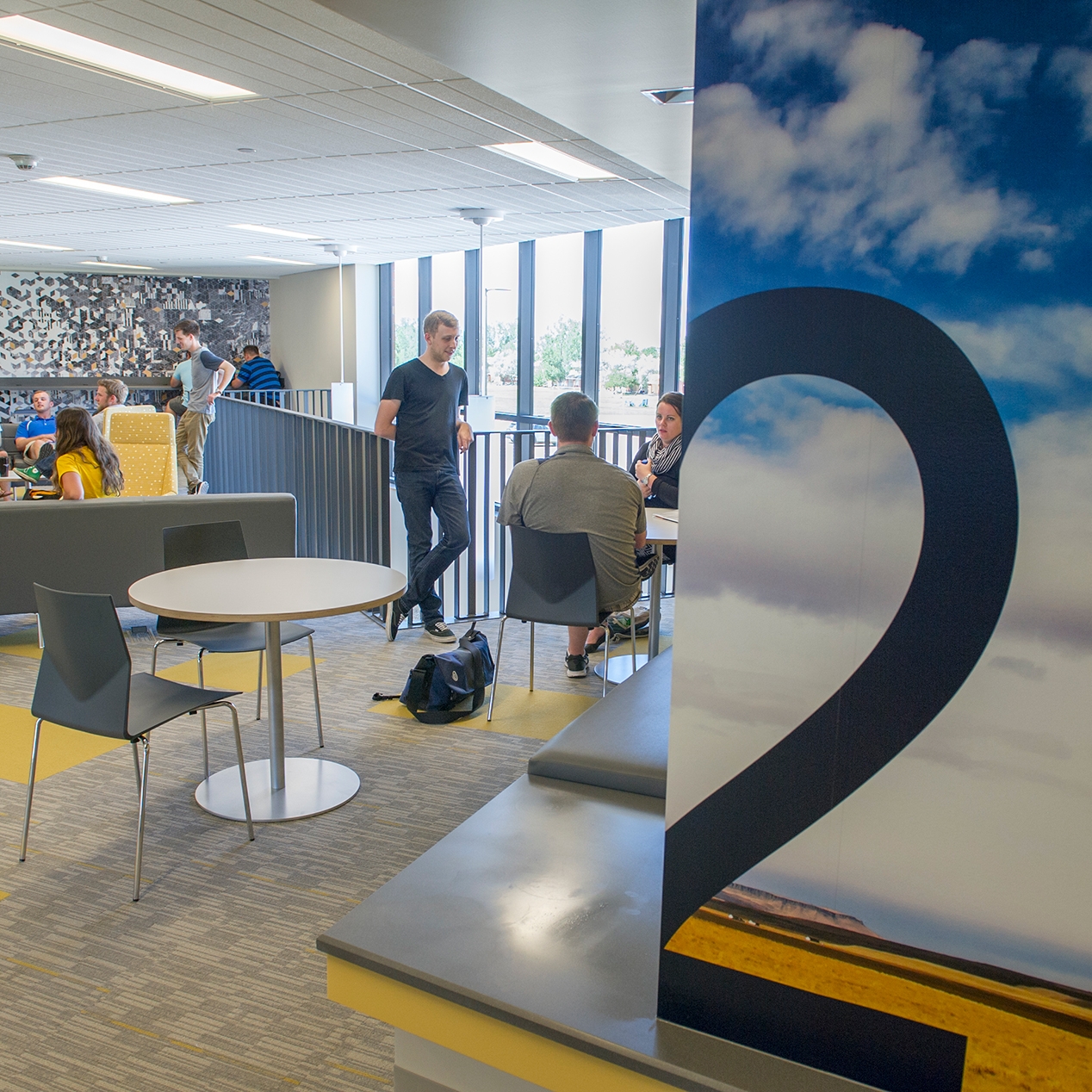
Interior finishes and wayfinding graphics on each floor of Montana State University’s Yellowstone Hall were derived from ecosystems found in Montana. This supports easy wayfinding throughout the building and promotes a sense of place. — NAC Architecture
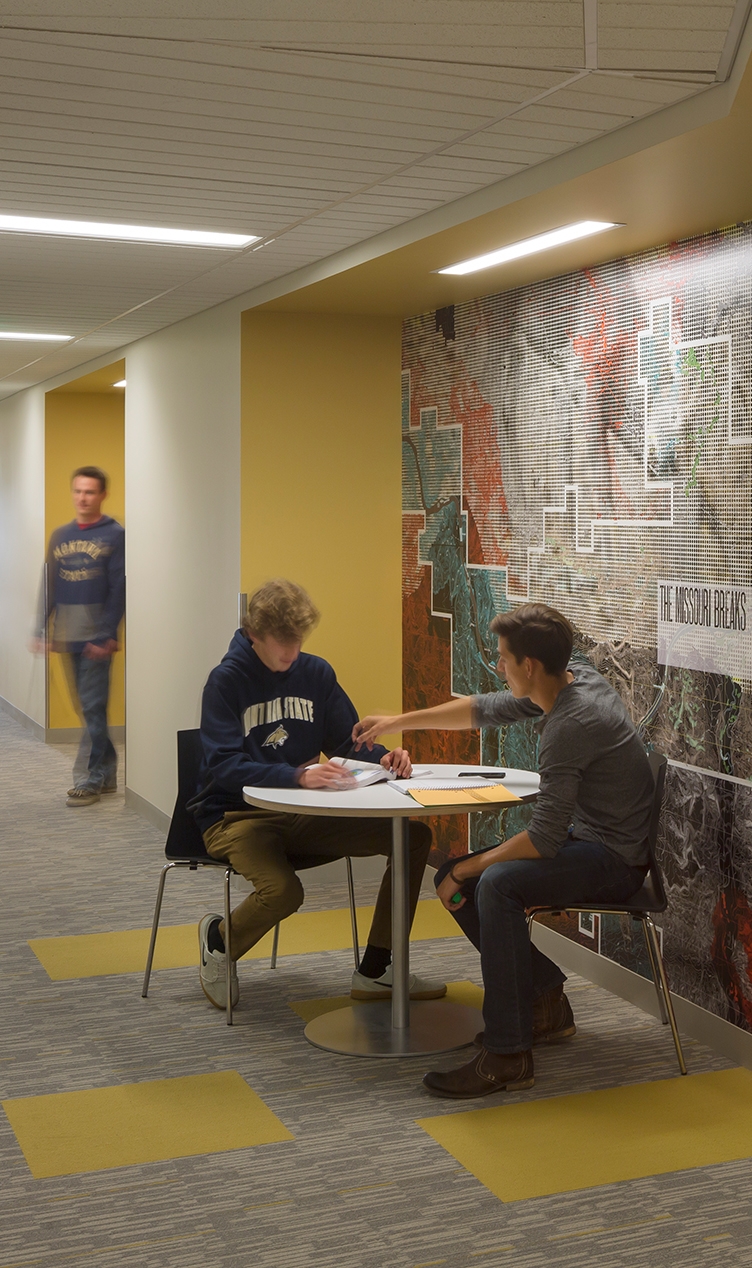
Wide corridors at Montana State University’s Yellowstone Hall provide additional spaces for students to study and collaborate, which helps break down the interior scale of the residential floors. — NAC Architecture
Prospect & Refuge. Prospect & refuge can be defined in two parts. “Prospect” refers to the discernment of distant objects and horizons, which were evolutionarily critical in identifying both resources and potential threats. “Refuge” refers to a built or natural environment that provides a secured or protected setting. Some of the most satisfying buildings and landscapes are a perfect mix of these two elements, creating a complementary relationship.
In their studies of spaces featuring prospect & refuge, Terrapin Bright Green notes that such spaces helped users see reduced stress levels, boredom, irritation, and fatigue, and increased comfort and perceived safety, as well as improved concentration and attention.2
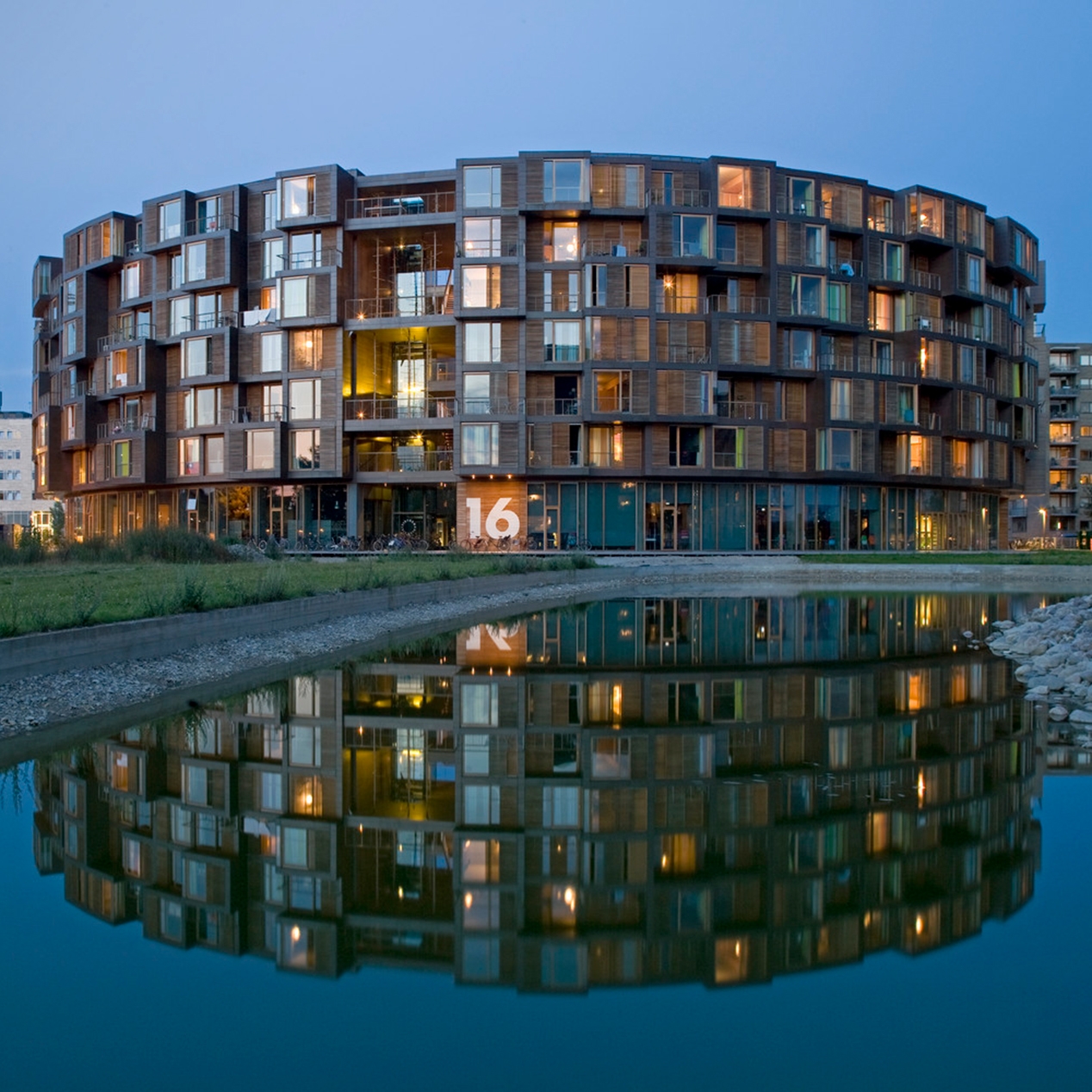
A central courtyard at the heart of the circle-round Tietgen Dormitory creates a secure outdoor environment where students feel safe and protected, yet still experience a sense of connection to the larger student housing community. — Lundgaard & Tranberg Architects, image courtesy of Lundgaard & Tranberg
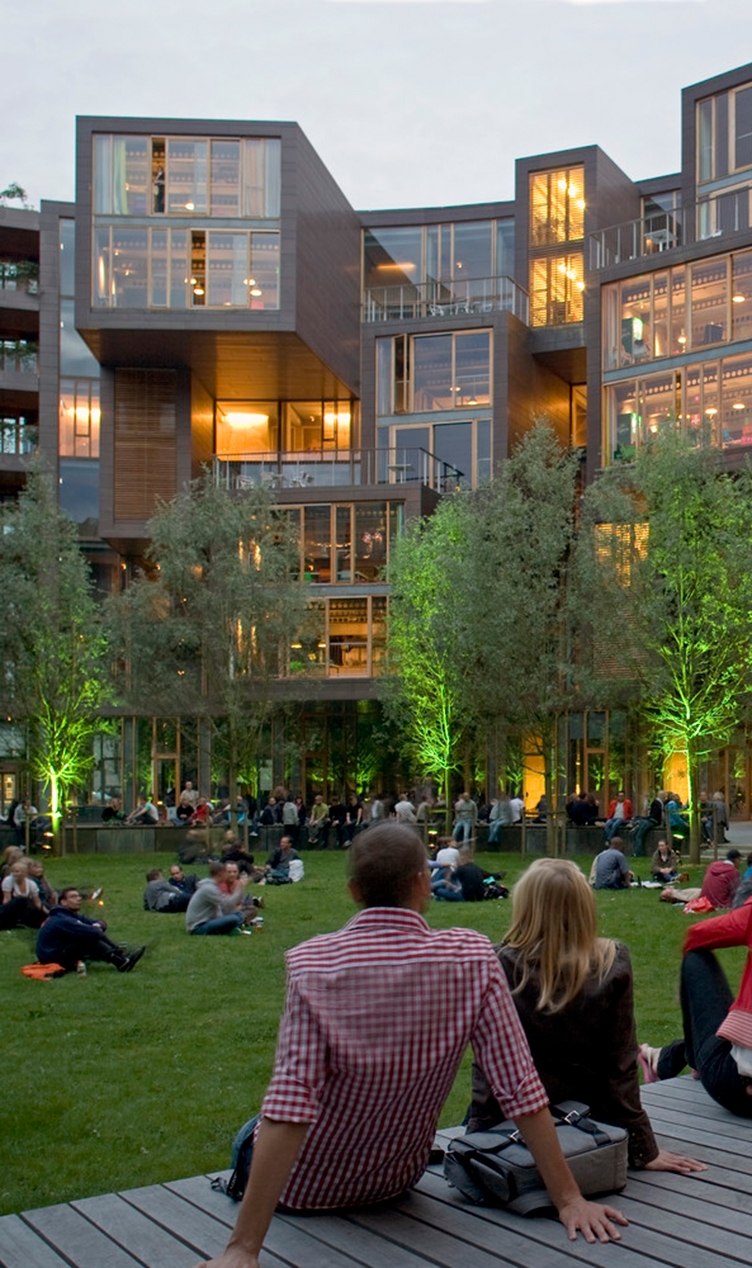
Views & Vistas. Views & vistas, or a visual connection to nature, points to the natural human preference for exterior views, namely those that include natural features and vegetation. Scale is of utmost importance with this element — the view cannot be out of scale or proportion, it must be comfortable, easily digestible for the human experience. Users of spaces with views of nature often exhibit lowered blood pressure and heart rate, improved mental engagement and attentiveness, as well as positively impacted attitude and overall happiness.
Ecological Connection to Place. People are sustained by a positive connection to ecology, particularly watersheds, mountains, deserts, rivers & oceans. The goal of the built environment should be to add value to the surrounding natural systems. When humans experience this Connection to Natural Systems within the built environment, they often exhibit enhanced positive health responses, as well as a shift in perception of the environment.
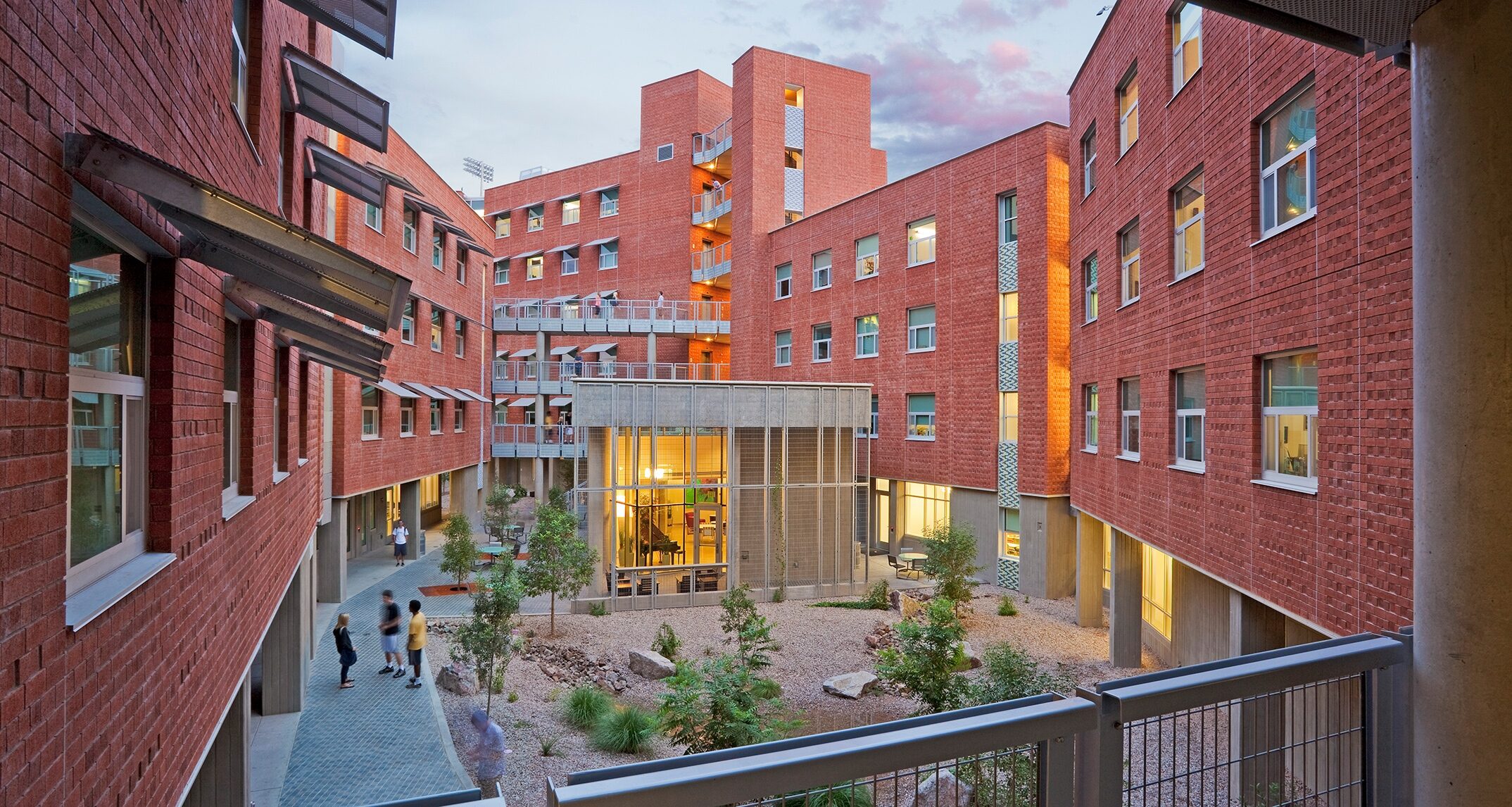
University of Arizona’s Likins Hall is wrapped around a central garden that resembles the rocky creek bed of an arroyo. Not only does this feature collect runoff and engage students in environmental stewardship, it builds respect and appreciation for the desert context surrounding the campus.” — NAC Architecture
Building Height. In the 1980s researchers compared high-rise and low-rise residence halls. They consistently found that students were more dissatisfied with high-rise halls because the size of the building created a perception of greater social density and crowding.3
Corridor Length. A number of studies in the 1970s and 1980s that focused on corridor length all essentially arrived at the same result: students living in residence halls with long corridors were less satisfied, expressed greater feelings of crowding, felt more isolated, reported fewer relationships, and had fewer social mechanisms for coping with complex social environments.4
Concluding Thoughts
The student’s residence is probably the most important and pervasive environmental influence on a student’s persistence in school.5 When architects and campus housing officials work together to understand and capitalize on a growing understanding of the transactions and interrelationships between people and their physical surroundings, we stand to enrich the overall educational experience.
References
1 Passini, R. (2002). Wayfinding Research and Design: An interdisciplinary approach in the development of design knowledge and its application. In J. Frascara (Ed.), Design and the Social Sciences: Making Connections (pp. 96-101). London: Taylor & Francis.
2 Browning, W.D., Ryan, C.O., Clancy, J.O. (2014). 14 Patterns of Biophilic Design. New York: Terrapin Bright Green llc.
3 Blimling, G. S. & Schuh, J. H. (2015). Student Learning in College Residence Halls: What Works, What Doesn’t, and Why. San Francisco: Jossey-Bass.
4 Ibid., p.181.
5 Astin, A. W. (1999). Student Involvement: A developmental theory for higher education. Journal of College Student Developpment, 40, 518-529.
